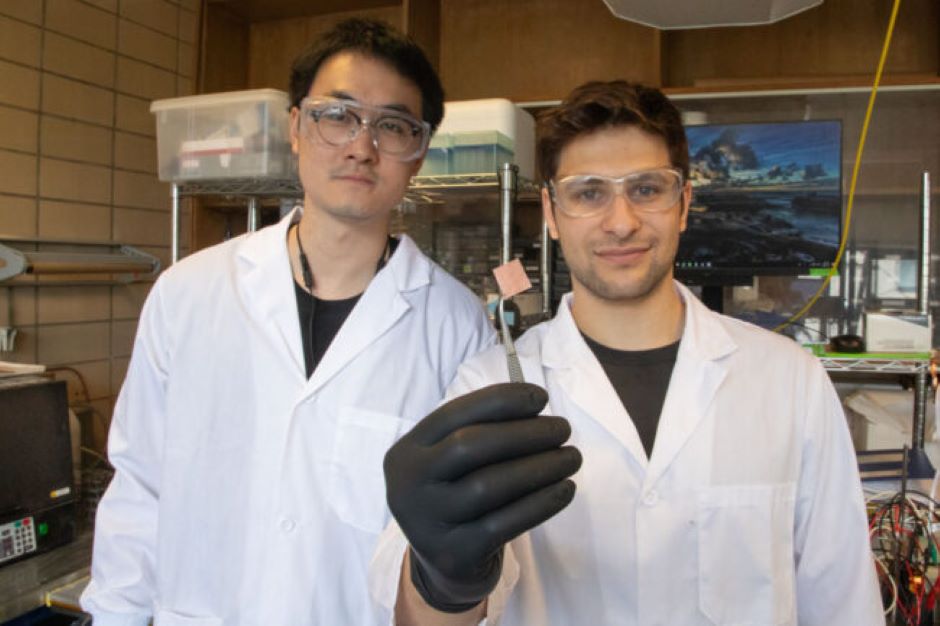The team of University of Toronto Engineering researchers believes its discovery is an important step toward more economically favourable techniques for carbon capture and storage.
In a statement, Professor David Sinton said: “Today, we have more and better options for low-carbon electricity generation than ever before. But there are other sectors of the economy that will be harder to decarbonise: for example, steel and cement manufacturing. To help those industries, we need to invent cost-effective ways to capture and upgrade the carbon in their waste streams.”
The Toronto team’s findings are detailed in Nature Energy.
Senior author Sinton and his team used electrolysers to convert CO2 and electricity into products such as ethylene and ethanol that can be sold as fuels or used as chemical feedstocks.
Inside the electrolyser, the conversion reaction happens when CO2 gas, electrons and a water-based liquid electrolyte unite on the surface of a solid catalyst.
The catalyst is often made of copper but may also contain other metals or organic compounds that can further improve the system. Its function is to speed up the reaction and minimise the creation of undesirable side products that reduce the efficiency of the overall process.
While many teams globally have produced high-performing catalysts, nearly all of them are designed to operate with a pure CO2 feed.
“Catalyst designers generally don’t like dealing with impurities, and for good reason,” said Panos Papangelakis, a PhD student in mechanical engineering and one of five co-lead authors on the new paper.
“Sulphur oxides, such as SO2, poison the catalyst by binding to the surface. This leaves fewer sites for CO2 to react, and it also causes the formation of chemicals you don’t want.
“It happens really fast: whereas some catalysts can last hundreds of hours on a pure feed, if you introduce these impurities, within minutes they can be down to five per cent efficiency.”
According to the team, there are well-established methods to remove impurities from CO2-rich exhaust gases before feeding them into the electrolyser, but they take time, require energy and raise the cost of carbon capture and upgrading. Furthermore, a small quantity of SO2 can create difficulties.
“Even if you bring your exhaust gas down to less than 10 parts per million, or 0.001 per cent of the feed, the catalyst can still be poisoned in under two hours,” said Papangelakis.
In their paper, the team described how they designed a more SO2-resilient catalyst by making two changes to a typical copper-based catalyst.
On one side, they added a thin layer of polyteterafluoroethylene (Teflon) that changes the chemistry at the catalyst surface, impeding the reactions that enable SO2 poisoning to take place.
On the other side, they added a layer of Nafion, an electrically-conductive polymer with some areas that are hydrophilic and hydrophobic. This structure makes it difficult for SO2 to reach the catalyst surface.
The team then fed this catalyst with a mix of CO2 and SO2, with the latter at a concentration of about 400 parts per million.
“In the paper, we report a Faraday efficiency — a measure of how many of the electrons ended up in the desired products — of 50 per cent, which we were able to maintain for 150 hours,” said Papangelakis.
“There are some catalysts out there that might start at a higher efficiency, maybe 75 per cent or 80 per cent. But again, if you expose them to SO2, within minutes or at most a couple of hours, that drops down to almost nothing. We were able to resist that.”
Papangelakis said his team’s approach does not affect the composition of the catalyst, making it widely applicable.

Shambhu Kumar is a science communicator, making complex scientific topics accessible to all. His articles explore breakthroughs in various scientific disciplines, from space exploration to cutting-edge research.


